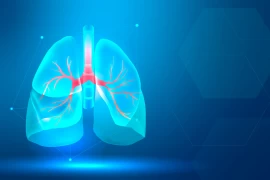
Chest Trauma
- Chest Trauma
- Types of Chest Trauma
- Symptoms of Chest Trauma
- Diagnostic Process
- Treatment Approaches
- Complications
- Conclusion
Chest trauma is a significant issue frequently encountered in pulmonology practice and requires immediate intervention. These traumas are defined as injuries resulting from impacts to the chest area and can develop due to various causes. Physical traumas such as accidents, sports injuries, falls, or assaults can damage the bones, muscles, and organs of the chest. In this article, I would like to detail the types of chest trauma, diagnostic processes, and treatment approaches.
Types of Chest Trauma
We can examine chest trauma under two main categories: penetrating trauma and blunt trauma.
- Penetrating Trauma
Penetrating chest trauma occurs when an object pierces through the chest wall. A knife, bullet, or sharp object can cause such injuries. This type of trauma typically affects the organs within the chest cavity directly and poses a life-threatening risk. Penetrating traumas require emergency intervention because they can result in severe complications such as bleeding, lung collapse (pneumothorax), or heart injuries. - Blunt Trauma
Blunt trauma results from a direct blow to the chest. Car accidents, falls, or sports injuries can cause this type of trauma. Blunt trauma often leads to rib fractures, sternum fractures, lung contusions (bruises), and in severe cases, even cardiac injuries.
Symptoms of Chest Trauma
The symptoms of chest trauma vary depending on the type and severity of the injury. The most common symptoms include:
- Severe chest pain
- Difficulty breathing and respiratory distress
- Bruising or swelling in the chest area
- Tenderness over the ribs
- Coughing, possibly with blood-stained sputum
- Palpitations or a rapid heartbeat
- Subcutaneous emphysema (air trapped under the skin)
Particularly symptoms like respiratory distress and subcutaneous emphysema may indicate a serious underlying injury and require urgent intervention.

Diagnostic Process
The diagnostic process in chest trauma must be quick and efficient. First, the physical examination and patient history are evaluated. The patient should describe how the trauma occurred and any symptoms clearly. In the physical examination, findings such as tenderness over the ribs, deformities, or air trapped under the skin are carefully assessed.
However, a physical examination alone may not be sufficient. In this case, advanced imaging techniques are necessary. The most commonly used methods include:
- X-ray: The primary imaging technique for assessing rib fractures and lung injuries. Conditions like pneumothorax or hemothorax can typically be detected with an X-ray.
- Computed Tomography (CT): Provides more detailed analysis, especially in blunt trauma cases. Lung contusions, vascular injuries, and diaphragm tears can be more clearly visualized through CT.
- Ultrasound: Used to quickly detect internal bleeding or fluid accumulation after trauma. Ultrasound is frequently preferred in emergency settings due to its rapid results.
Treatment Approaches
Treatment for chest trauma varies depending on the type and severity of the injury. In some cases, conservative (medication and observation) treatment is sufficient, while in more severe cases, surgical intervention may be required.
- Conservative Treatment
In less severe traumas such as rib fractures, the primary goals are pain control and maintaining respiratory function. Nonsteroidal anti-inflammatory drugs (NSAIDs) and analgesics can be used for pain management. Additionally, patients are taught deep breathing exercises and coughing techniques, which are crucial in preventing lung infections. - Oxygen Therapy
In cases such as pneumothorax or lung contusions, oxygen support may be necessary. Oxygen therapy is administered through a mask or nasal cannula. In some severe cases, intubation and mechanical ventilation may be required. - Surgical Intervention
Surgical intervention is unavoidable in cases of severe rib fractures, major bleeding, or organ injuries. In the presence of hemothorax or a large pneumothorax, a chest tube is inserted to drain blood or air. In some penetrating trauma cases, emergency surgery may be performed to repair damaged organs.
Complications
Chest trauma, particularly when untreated or delayed in intervention, can lead to serious complications. Common issues in the post-trauma period include lung infections, persistent shortness of breath, and improper healing of rib fractures. Especially in elderly patients or individuals with underlying chronic conditions, the recovery process can be longer and more challenging.
Conclusion
Chest trauma is a condition that requires urgent intervention and can lead to severe complications. In such traumas, a quick and effective diagnosis and treatment process is critical. To protect the patient's quality of life and prevent fatal complications, appropriate approaches must be implemented. As pulmonologists, we must continue to support our patients during the follow-up and rehabilitation processes after trauma. Proper management of both the physical and psychological aspects of recovery plays a crucial role in long-term healing.

Spc. Dr. Özgür İnce
Pulmonology Specialist





